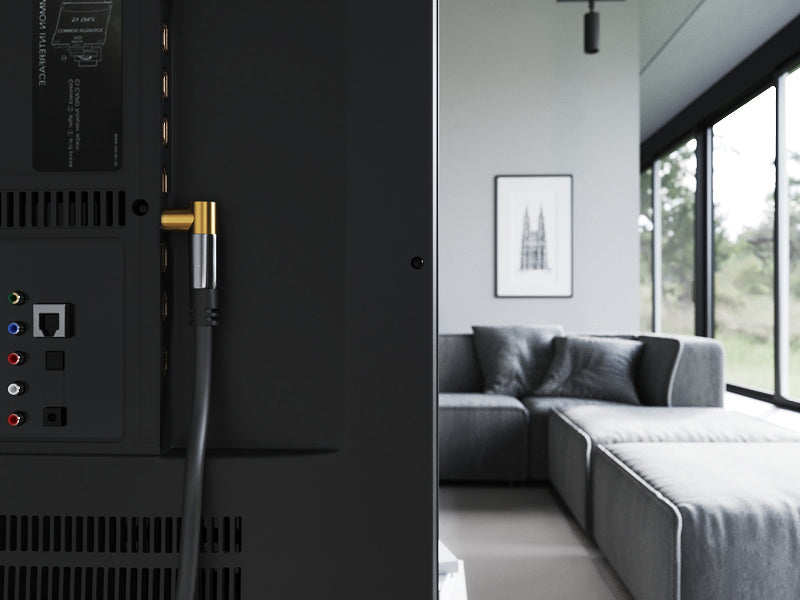
FOR TV AND RADIO: ANTENNA CABLES AND ANTENNAS
Share

If you want to enjoy TV or the radio, you’ll probably need the right cable for your indoor antenna or home’s coaxial outlet – or even an antenna itself for that matter. Read on to learn all about the different standards.
While you can enjoy watching TV or listening to the radio via streaming services, this hasn’t signalled the end for traditional transmission technologies like DVB-T, DVB-C, and DVB-S (digital terrestrial, cable, and satellite). And the good news: You don’t need a specific type of cable for each transmission technology as there’s already an established standard that covers practically every requirement. Here’s an overview.
The antenna cable: One cable for (practically) everything
KabelDirekt antenna cables are available in four configurations. There’s no technical difference between them, with each offering multiple layers of shielding, high-quality copper conductors, and 75 ohms of characteristic impedance. Plus, they’re all ideal for TV (including hi-res HDTV) and analogue and digital radio (DAB) as well as for DVB-T/T2 and DVB-C. You can even use them for digital satellite (DVB-S/S2), although you’ll often need a special satellite cable. Antenna cables only differ in terms of their male and/or female connectors. Depending on your setup’s requirements, you can choose from connectors that are either straight or right-angled.
There are also types with a combination of a straight male connector and right-angled female connector, or vice-versa. You’re best off with a right-angled connector when space is tight, such as when your coaxial outlet is right behind your sofa or if your TV is mounted on the wall.

Want to enjoy TV or radio but don’t have a coaxial outlet? That’s okay!
You’ll need a cable if you want to connect your TV or radio directly to a coaxial outlet. But if you don’t have one, you can receive TV and radio signals another way: Using a DVB-T digital terrestrial antenna. You can either connect it to your DVB-T2 set-top box receiver or straight to your TV, if it has an internal tuner. The antenna already has an antenna cable, which you can extend using an additional cable.
One important thing to remember is that KabelDirekt DVB-T antennas are compact, so designed for indoor use only. Generally speaking, signal strength varies depending on where you place the antenna. This means that any tall trees or buildings nearby will have a negative impact on reception. Irrespective of this, a mini antenna offers good reception quality wherever you place it – whether you use it in your city flat or caravan.

